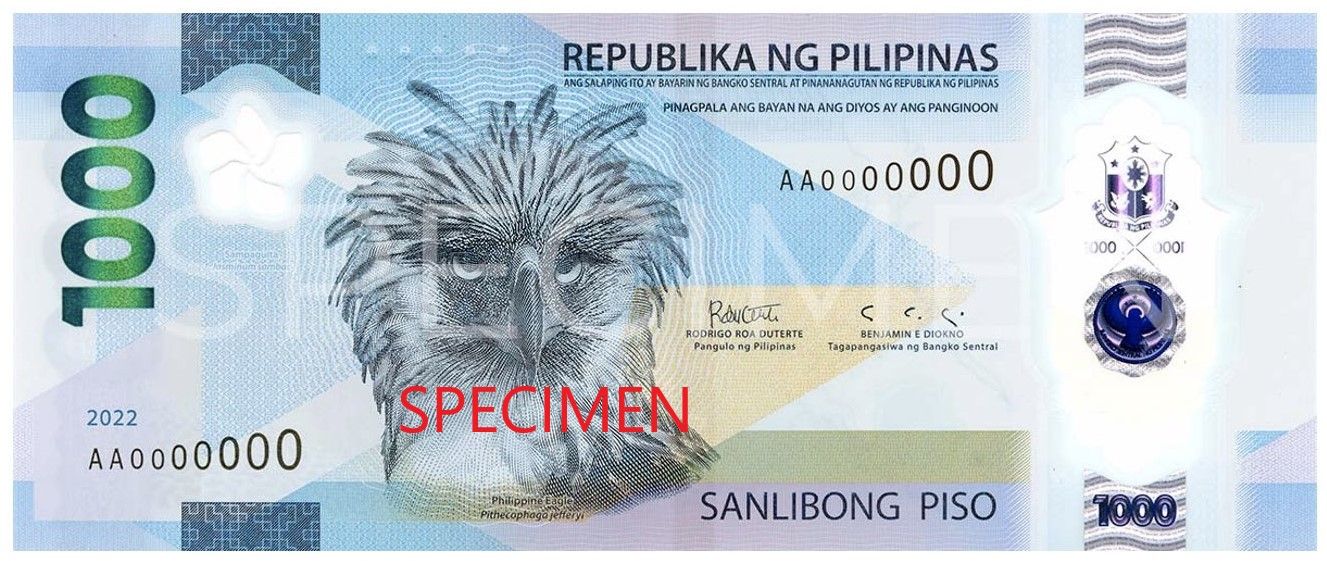
CCL Secure has closely collaborated with Note Printing Australia (NPA) working with the Bangko Sentral ng Pilipinas (BSP) on its new GUARDIAN™ polymer banknote. The new 1000-piso will be issued into circulation later this month.
Working together for the central bank’s vision
BSP Governor Benjamin Diokno cites the bank’s responsibility to provide cleaner, safer and more sustainable banknotes as reason for the shift to polymer. This follows ongoing public health and safety concerns unfolding in the Philippines from the COVID-19 pandemic.
“As the sole issuer of Philippine currency, and in line with best practices of central banks worldwide, the BSP periodically updates the material, design, and security features of our banknotes to ensure that they promote public well-being, be durable enough for longer-term use and incorporate the latest technology to prevent counterfeiting,” Governor Diokno said.
Creating the bank’s first polymer note involved a close collaborative process with NPA’s designers to create a striking new banknote look which is modern, innovative and beautiful.
NPA led the project from design through to production, demonstrating its expertise and creative capability. CCL Secure supported the substrate design that helped bring the concept to realisation.
CCL Secure Vice President and Managing Director, Neil Sanders, commented: “We’ve proudly worked in close collaboration with Note Printing Australia over the past year to help them realise the Banko Sentral ng Pilipina’s vision for their new polymer banknote.”
The note’s design is a celebration of local flora and fauna. It features the Philippine Eagle and the native flower Sampaguita on one side, and the Tubbataha Reefs Natural Park, South Sea Pearl and T’nalak weave design on the other.
Innovative security features to safeguard the new 1000-piso against counterfeiting include multiple transparent windows, luminescent imagery, tactile dots and serial numbers. Several of the features are also integrated into the GUARDIAN™ substrate, making them extremely difficult to replicate.
Polymer is proven
Polymer banknotes are inherently more hygienic than paper notes, thanks to their smoother and non-absorbent surface. This makes it harder for bacteria to adhere to the notes, and is easier to sanitise without causing damage. Scientists at Harper Adams University found that common bacteria and viruses are less likely to survive on polymer banknotes than paper banknotes.
In addition to the appealing designs and robust security features, polymer banknotes last much longer in public use than alternative substrates, reducing their carbon footprint and offering long-term cost benefits.
The Philippines joins a growing group of more than 40 other countries to have adopted GUARDIAN™ for their banknotes.
“More and more central banks are making the move to GUARDIAN™ polymer, signaling that the benefits are being widely recognised across the world,” said Mr Sanders.
“As a company, CCL Secure’s sole focus is on engineering the best polymer banknotes possible. We support central banks making the switch to polymer by providing our specialised expertise”
Governor Diokno told Central Banking that because Australia was the first country to introduce polymer notes, “their advanced technology and expertise in the printing of polymer banknotes will be the best benchmark for our first circulation.”
The 1000-piso in circulation
The new 1000-piso polymer banknote will be issued on 18 April and circulated alongside the current 1000-piso paper banknote.